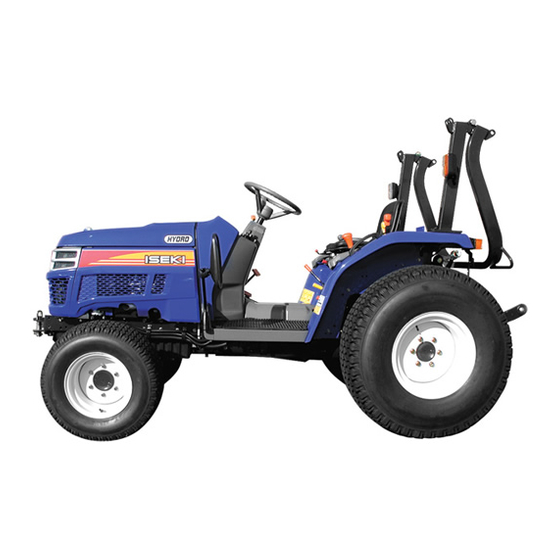
Table of Contents
Advertisement
Quick Links
Thank you very much for purchasing an ISEKI tractor.
This operator's manual provides the information necessary for operating and maintaining
your tractor safely and properly. The contents are mainly composed of the following two
items:
Safety instructions:
Technical instructions: Essential items which you should observe while
Before starting to operate the machine for the first time, you should read this operation man-
ual thoroughly and carefully until you are sufficiently familiar with the operation of the
machine to do jobs safely and properly. The manual should be kept in a handy place so you
can refer to it when required. You are advised to refer to it from time to time to refresh your
understanding of the machine.
Your dealer has performed the pre-delivery service on your new machine.
He will discuss with you the operating and maintenance instructions gives in this manual, and
instruct you in the proper and varied applications of this machine. Call on him at any time
when you have a question, or need equipment related do the use of your machine.
Paragraphs in the manual and labels on the machine which are
accompanied by a caution particularly important information about
safe operation to avoid accidents. You should always keep precau-
tions in mind and follow them during operation.
personnel protective equipment
In some of the illustrations used in this operation manual, panels or
guards may have been remove for clarify. Never operate the tractor
with these panels and guards removed.
If the removal of a shield is necessary to make a repair, it must be
replaced before operation
All information, illustrations, and specifications contained in this manual are based on the lat-
est information available at the time of publication. The right is reserved to make changes at
any time without notice.
TO OUR CUSTOMER
Essential items which you should observe while
operating the tractor
operating the tractor
Be sure to wear
during operation
1
ISEKI TRACTORS
Advertisement
Table of Contents

















Need help?
Do you have a question about the TH4330 and is the answer not in the manual?
Questions and answers